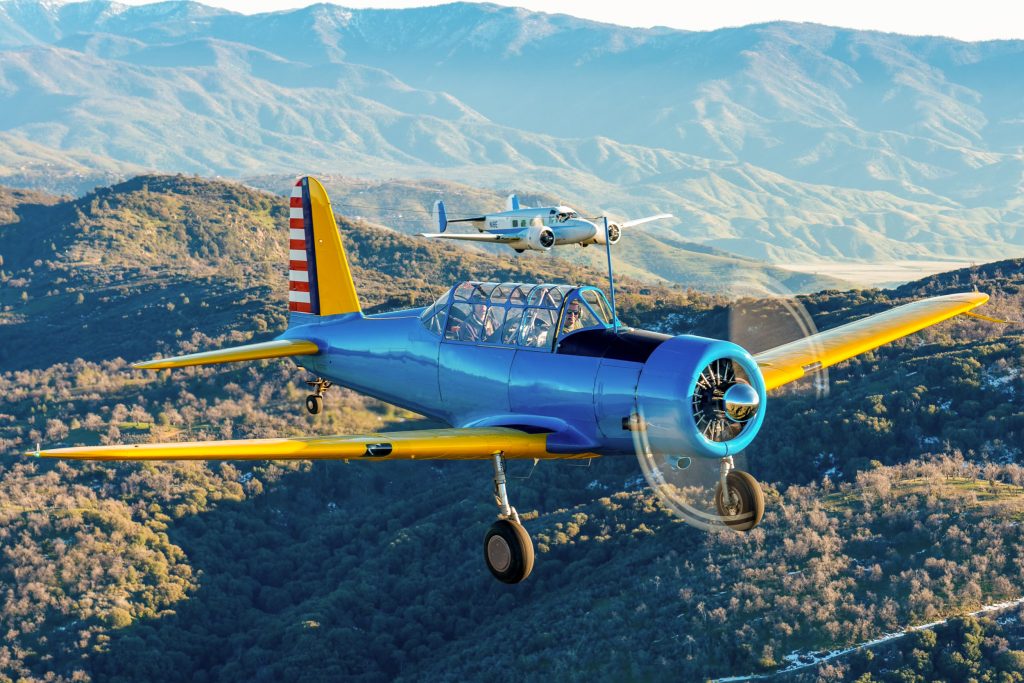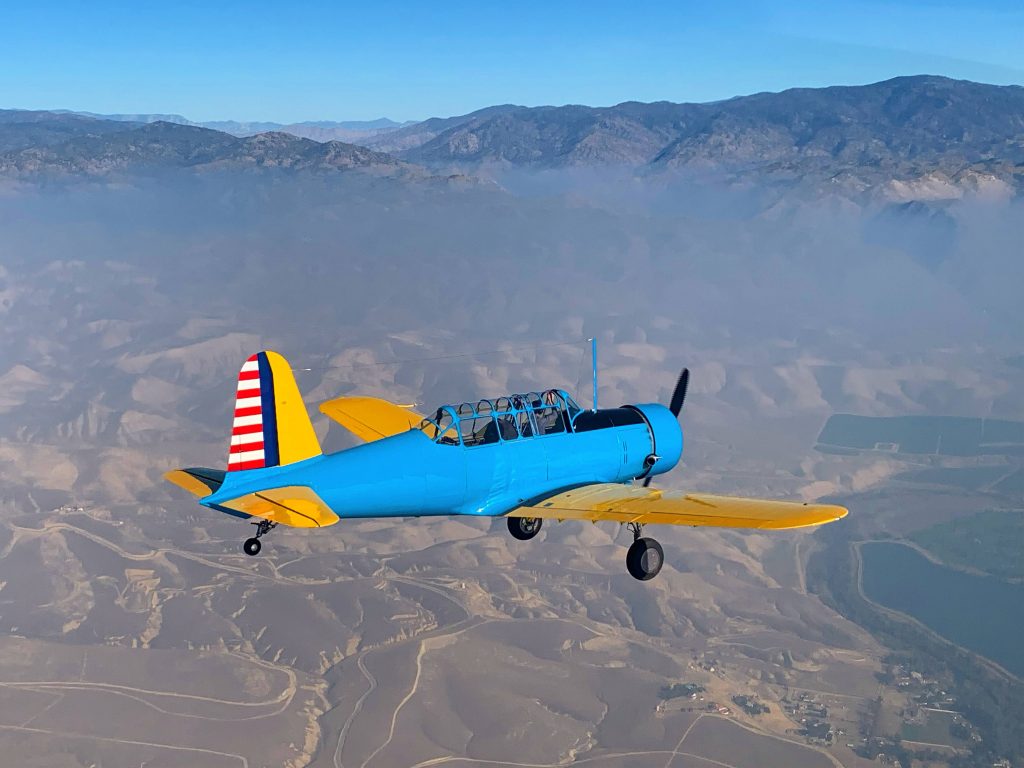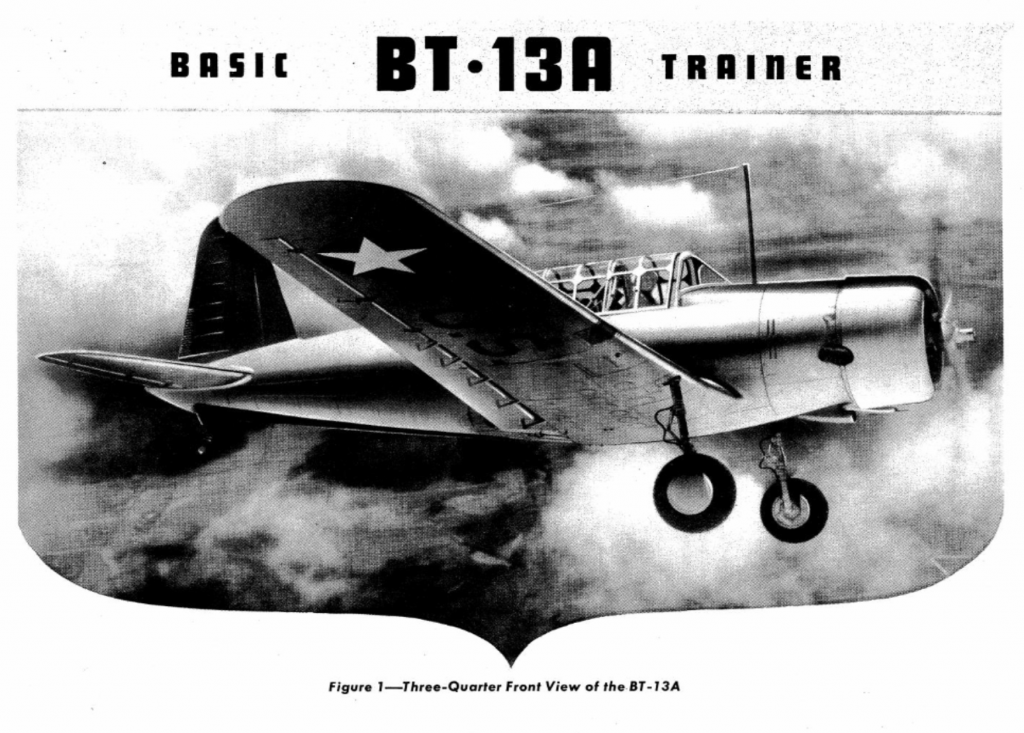Vultee BT-13A Valiant: The WWII Intermediate Trainer

The Vultee BT-13A Valiant, a cornerstone of World War II pilot training, was a single-engine, low-wing monoplane used by the United States Army Air Forces (USAAF) and Navy to bridge the gap between primary and advanced training. Built by Vultee Aircraft, it was affectionately nicknamed the “Vibrator” for its distinctive engine rumble. With over 11,500 BT-13s produced, the BT-13A variant was the most numerous, equipping training fields across the U.S. to prepare thousands of pilots for combat. Our museum proudly displays a restored BT-13A, showcasing its critical role in shaping Allied air forces.
History
In 1938, the USAAF sought a robust intermediate trainer to replace outdated biplanes. Vultee’s BC-3 design, which evolved into the BT-13, won a 1939 competition, with the first flight occurring that year. The BT-13A, powered by a 450 hp Pratt & Whitney R-985-AN-1 radial engine, entered service in 1940, with 7,397 built by 1944. It was used extensively at bases like Randolph Field, Texas, and trained pilots from the U.S., Canada, and other Allied nations. The Navy’s version, the SNV-1, was nearly identical. The BT-13A’s rugged design allowed cadets to master complex maneuvers, navigation, and instrument flying before transitioning to fighters or bombers. After the war, surplus BT-13As were sold to civilians, serving as crop dusters, stunt planes, and private aircraft. Some were exported to countries like Brazil and Mexico, with a few remaining airworthy today, cherished by vintage aviation enthusiasts.

Design Features
The BT-13A is a two-seat, tandem-cockpit monoplane with a low-wing configuration and fixed landing gear. Its all-metal airframe, except for fabric-covered control surfaces, ensured durability. The Pratt & Whitney R-985-AN-1 radial engine, driving a two-blade variable-pitch propeller, provided reliable power. The aircraft featured a robust hydraulic system for flaps and gear, and its cockpit included dual controls and instrumentation for blind-flying training. The BT-13A’s wide-track landing gear minimized ground loops, a common issue for trainees. While not designed for combat, its design influenced later Vultee projects, like the A-35 Vengeance dive bomber. The aircraft’s simple maintenance and forgiving nature made it ideal for rigorous training schedules.
Specifications
| Specification | Details |
|---|---|
| Manufacturer | Vultee Aircraft |
| Model | BT-13A Valiant |
| First Flight | 1939 |
| Crew | 2 (instructor and student, tandem) |
| Wingspan | 42 ft 0 in (12.80 m) |
| Length | 28 ft 10 in (8.79 m) |
| Height | 11 ft 6 in (3.51 m) |
| Wing Area | 239 sq ft (22.2 m²) |
| Empty Weight | 3,375 lb (1,531 kg) |
| Gross Weight | 4,496 lb (2,039 kg) |
| Powerplant | Pratt & Whitney R-985-AN-1, 450 hp (336 kW) |
| Fuel Capacity | 120 gal (454 L) |
| Max Speed | 180 mph (290 km/h) |
| Cruise Speed | 155 mph (249 km/h) |
| Stall Speed | 65 mph (105 km/h) |
| Range | 725 mi (1,167 km) |
| Service Ceiling | 21,650 ft (6,600 m) |
| Rate of Climb | 1,200 ft/min (6.1 m/s) |
Flight Characteristics
The BT-13A was designed for stability and ease of use, ideal for intermediate training. Its 450 hp engine provided a maximum speed of 180 mph (290 km/h) and a climb rate of 1,200 ft/min, allowing cadets to practice formation flying, aerobatics, and instrument approaches. The aircraft’s responsive controls and predictable handling helped build pilot confidence, though its heavy controls at low speeds required careful attention during landings. The “Vibrator” nickname stemmed from the R-985 engine’s vibration, noticeable in the cockpit. Its stall speed of 65 mph (105 km/h) was forgiving, but the aircraft’s 4,496 lb gross weight demanded respect during maneuvers. The BT-13A’s versatility enabled training in night flying, cross-country navigation, and recovery from spins, preparing pilots for advanced trainers like the AT-6 Texan.
Museum Significance
Our museum’s BT-13A, restored to its 1942 USAAF configuration with silver finish and wartime markings, reflects its role in training the pilots who helped win WWII. Displayed alongside other trainers, it highlights the progression from primary trainers like the PT-23 to combat aircraft. Visitors can explore its tandem cockpit, radial engine, and rugged airframe, which symbolize the resilience of wartime training programs. The aircraft’s legacy, carried on by Women Airforce Service Pilots (WASPs) who ferried it and civilian owners who preserved it, underscores its enduring impact on aviation history.

